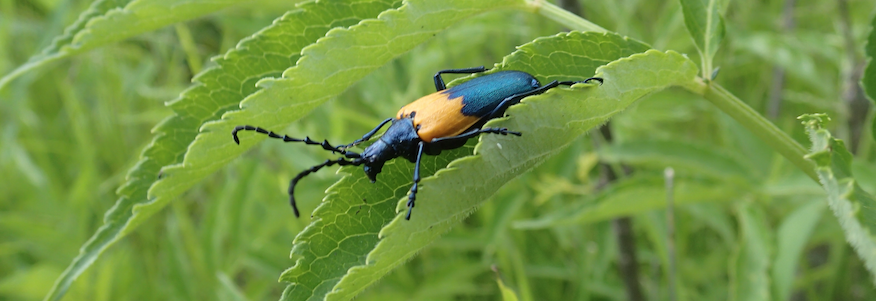
Happy Bee-lated World Bee Day
World Bee Day was May 20th, a day to appreciate bees for the enormous role they play as pollinators.

The Secret Life of Butterflies
With such striking coloration, this meadow fritillary (Boloria bellona) easily stands out against its floral backdrop when feeding and in flight. However, it needs to be a little more inconspicuous at times of rest.


Color in the field!
As spring rains give way to warm, sunny days, the meadows of Mount Rogers come to life with the emergence of a plethora of insects. Among these creatures is a beetle with a striking iridescent blue body and a yellow-orange wash across its elytra (forewings).

Hokie Bugfest!!
Clyde Kessler and Scott Jackson-Ricketts set up a BRDC booth at the 4th annual Hokie Bugfest. This year's Hokie BugFest (HBF) attendance was 6,112 - a significant increase over 4,229 of last year.